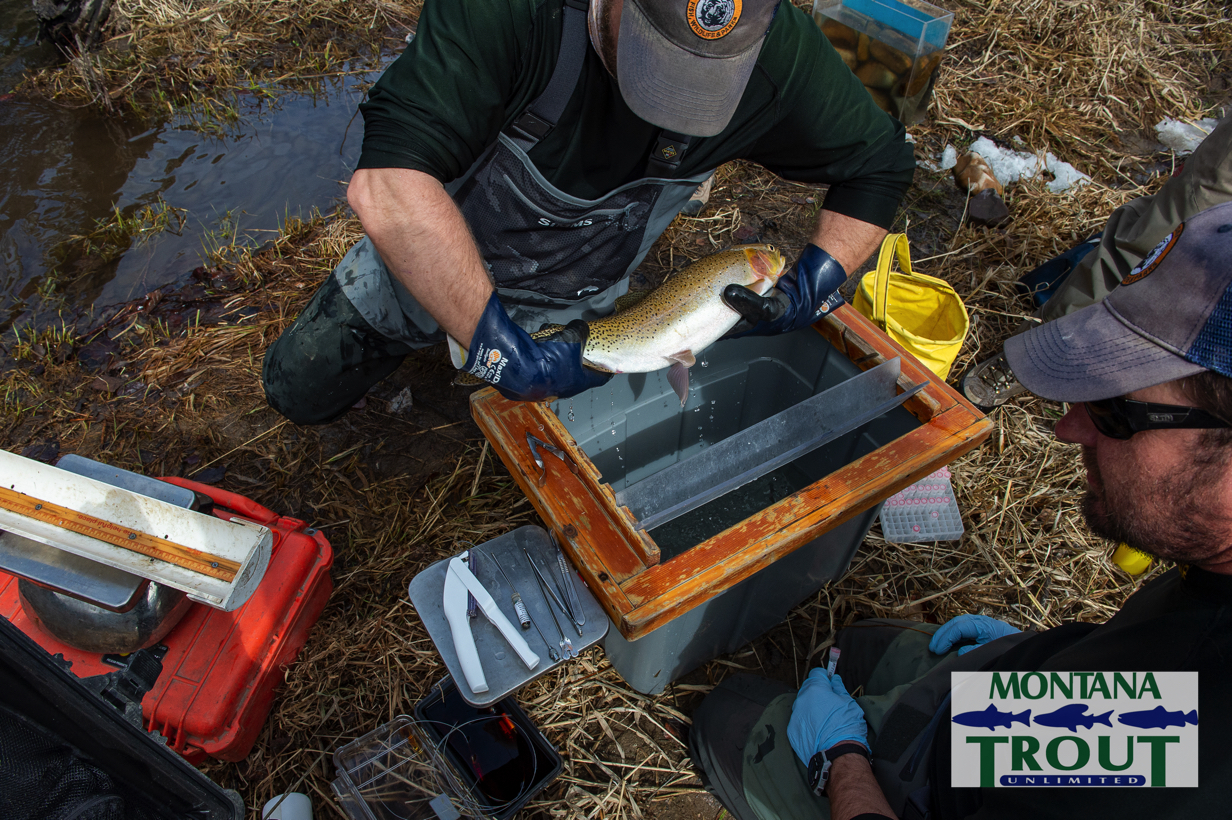
Trout Tracking Studies
Why Do Trout Migrate?
Our tributary streams are absolutely essential to maintaining healthy trout populations throughout our river systems because they provide high quality spawning and rearing habitat. That’s why we work to conserve, protect, and restore streams both large and small, from a tiny creek you can jump across to large rivers like the Yellowstone, Missouri, and Clark Fork.
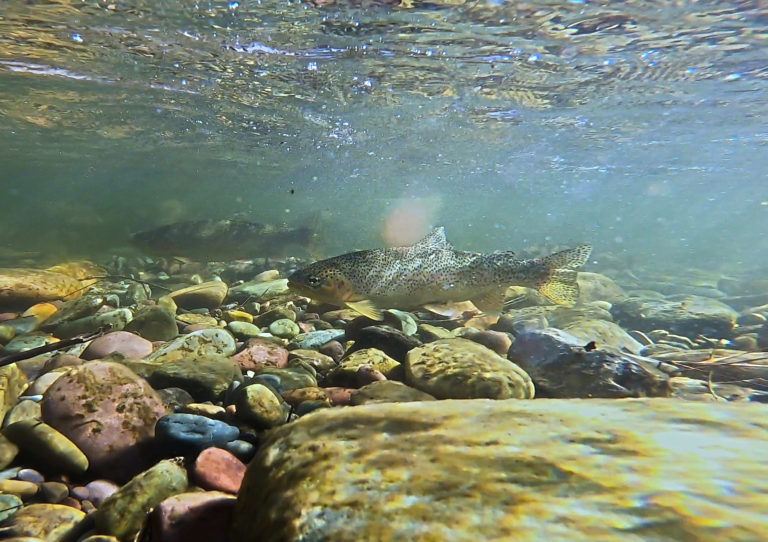
Trout and salmon exhibit a variety of life histories, even within the same population in a small stream. A life history is like an individual fish’s chosen career. Just like when we decide on our vocation, there are tradeoffs; advantages and disadvantages to each life history. Also, much like diversifying an investment portfolio helps to mitigate risk in the financial world, having a diversity of life histories helps our trout populations mitigate the risk of severe environmental conditions. Research shows that while some trout remain residents in small streams for their entire lives, others out-migrate to larger rivers or lakes, much like steelhead and salmon.
While making a migration can be dangerous, by moving to a more fertile environment, a migratory fish can grow much faster, and thus produce more offspring, than a small stream resident of the same age. But size isn’t everything, and resident fish are also successful and vitally important to populations, by providing a buffer against catastrophic events and genetic purity.
The Advantages and Disadvantages of Migration
The infographic below, reproduced courtesy of FishBio, is adapted from steelhead v. resident life history data. While the factors that influence a fish’s likelihood to adopt an anadromous or resident life history have been well demonstrated in the steelhead/resident rainbow dichotomy, we know much less about tributary residents vs. large stream migrants. We can only infer that similar factors would play a role, but whether there is a genetic basis (i.e. migratory mothers beget migratory offspring, etc.) to these life histories, homing (back to the natal tributary from the larger stream), and to what extent other determinants play a role in life history expression of freshwater residents we are still speculating. We’re working together with Trout Unlimited, Montana Fish, Wildlife & Parks, and others to find the answers to these questions.
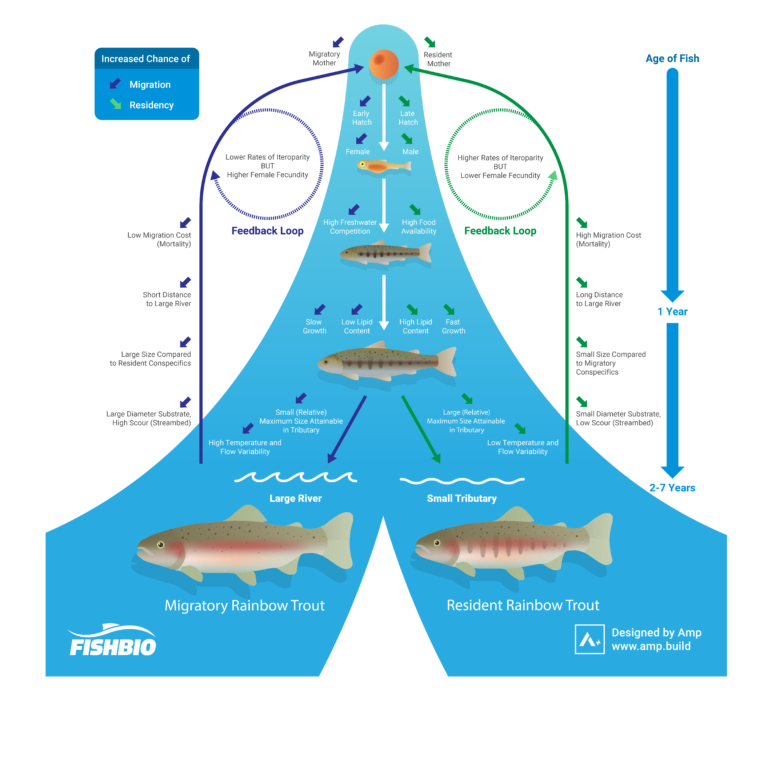
We still have a lot to learn about these fish. How far do they travel? What causes one fish to remain a resident but another to migrate? What combination of genetic and environmental factors are at play? To answer these questions, Montana Trout Unlimited is a partner on two separate fish migration studies in the Clark Fork watershed.
The Race Up Rock Creek
For the past several years, Montana Fish Wildlife and Parks biologists have been tracking Westslope cutthroat trout that migrate into and out of the Rock Creek watershed using radio telemetry. The public is invited to follow along via the Race Up Rock Creek Dashboard here on our website.
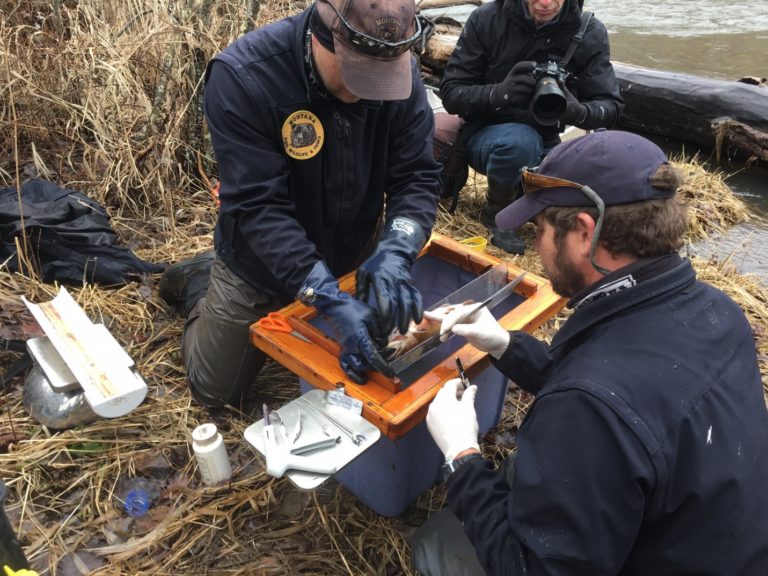
Rock Creek is a world class trout fishery that has a robust native population of westslope cutthroat trout. Understanding their life histories is key to proper management. This study involves implanting radio telemetry devices in a number of Westslope cutthroat trout, then tracking their movement over the time. The objectives of this study are to identify spawning areas in tributaries, and determine potential causes of mortality or migration blockage. Then restoration managers hope to document potential restoration projects to mitigate those impacts and determine the extent to which westslope cutthroat trout tagged in Rock Creek use the main stem Clark Fork River.
Visit the Race Up Rock Creek Dashboard to track our fish throughout the year. You can also donate to the project and sponsor and name your own trout and cheer them on. The public is also now able to comment on their progress through the comment tool. Trout positions are updated weekly by fisheries technicians as they track the trout throughout the watershed.
Missoula Trout Tag Study
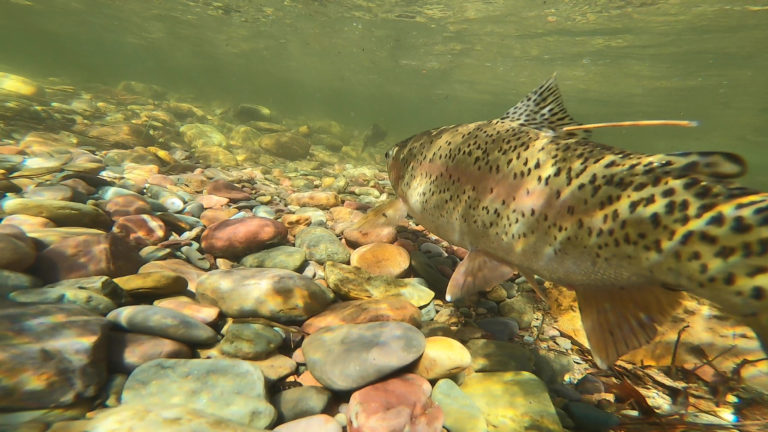
New in 2020, the Missoula Trout Tag Study is a mark-recapture research project, focusing on spawning tributaries in the Clark Fork and Lower Blackfoot rivers near Missoula. In the Spring of 2020, Montana Fish Wildlife and Parks biologists began tagging up to 700 trout near the mouths of Rattlesnake, Marshall, Deer, Johnson, and Twin Creeks with different colored Floy tags. Each tributary population has a distinct tag color. After spawning, many of these tagged fish will migrate to summer feeding habitat in larger rivers like the Blackfoot and Clark Fork. Anglers a can help by reporting and then releasing tagged fish during the season.
If you catch a tagged fish in the Clark Fork watershed:
- Note the color and number on the tag. Take a clear photo if possible.
- Release the fish. DON’T REMOVE THE TAG!
- Call (406)542-5520 or visit montanatu.org/trouttag and click “REPORT”
- Report the tag color, tag number, and catch location
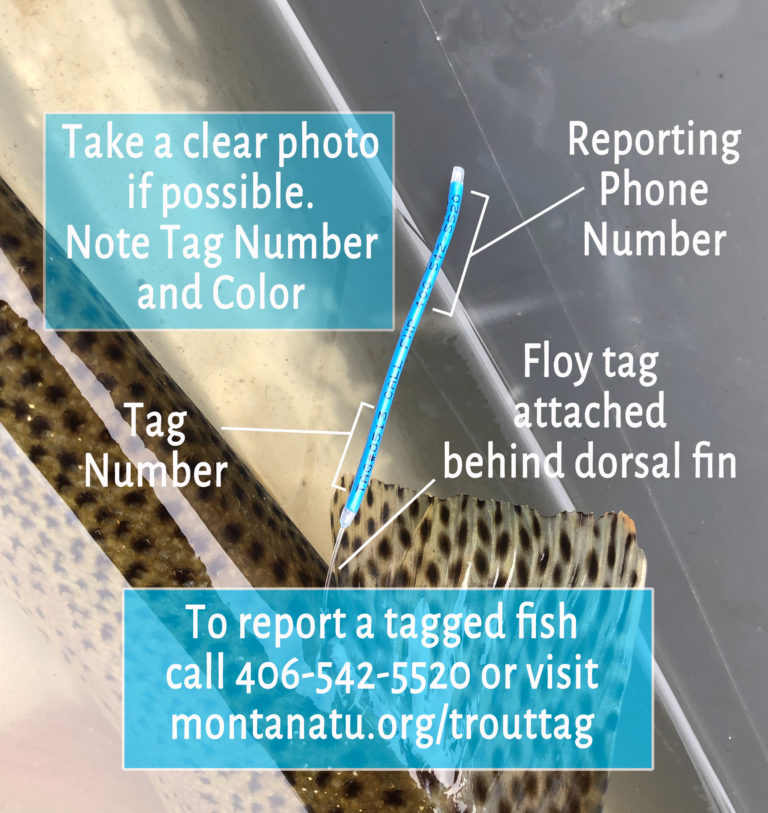
All anglers who report tags during the season will be entered into a Gift Card prize drawing.
So keep your eye out for tagged fish on your angling adventures in western Montana. Together, we can help our fisheries managers better understand how our trout are moving and better focus our restoration efforts. Thanks for your help!